The small island of Cuba sits only 90 miles off the coast of Key West and elicits images of Havana in the ’40s and ’50s … evocative scenes of vintage American cars, Ernest Hemingway drinking daiquiris at the Floridita Bar or, for the historians among us, images of Christopher Columbus’ discovery, the Spanish Empire and the revolution that put Fidel Castro in power and ultimately closed Cuba to most American citizens.
Since early 2016, when restrictions on U.S. travel were eased, Americans began joining other nations in exploring the history and culture of Cuba, myself included. Upon our arrival at the International Airport in Havana, passengers (mostly Cuban citizens returning, and Americans of Cuban descent visiting), clapped loudly. It was a startling and emotional entry into another world: the world of Cuba.
My early 2017 trip included time spent in Playa Giron (known to the United States as The Bay of Pigs), Cienfuegos (founded in 1819 by the French and many from Louisiana) and Trinidad de Cuba. But today, let’s focus on seven spots to visit in (or near) the capital of Havana.
Plaza de la Revolution
Our first stop was Plaza de la Revolution, where Fidel Castro addressed the Cuban citizens throughout the years until his retirement from public office, and where a million Cubans came to hear Pope John Paul II in 1998.

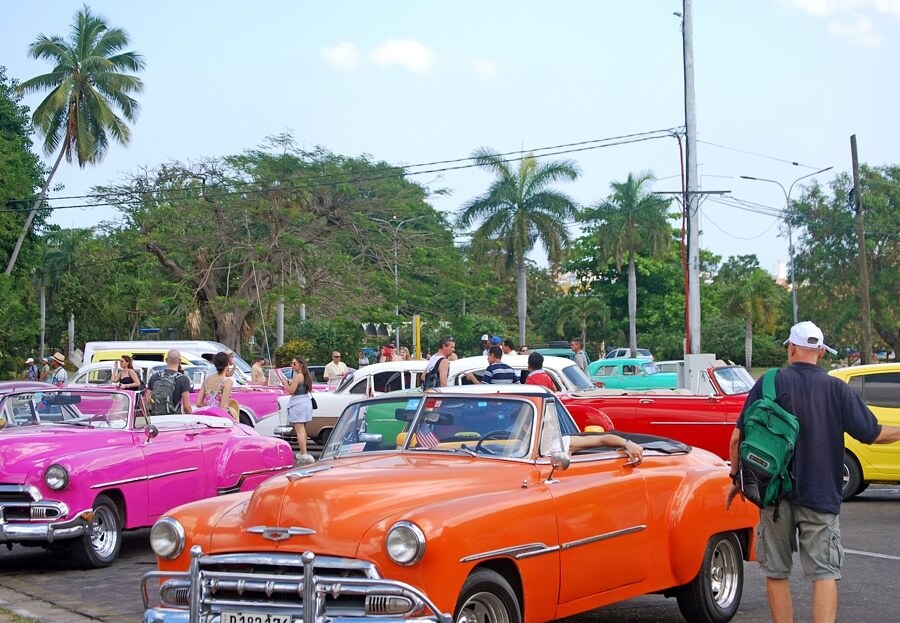
For history lovers, Old Havana is the mecca of the early Spanish colonization of the island. From stone forts built to repel invaders, to the large plazas where buildings from the early 16th century still stand, time spent in this UNESCO World Heritage Site is like stepping back in time. However, this is no sterile homage to the past. While many of the historic buildings are museums, others are filled with art galleries and restaurants or are private homes, with windows open and laundry drying in the breeze. The scents of grilled meats, baked plantains and the ubiquitous beans and rice fill the streets, mingling with the smell of cigar smoke wafting through the plazas.

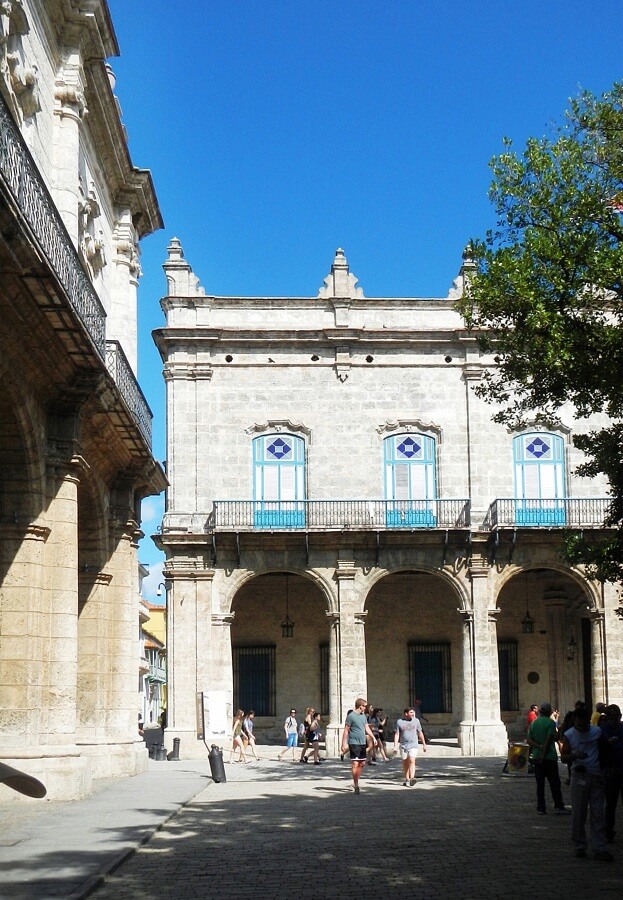
Havana Club Rum Museum
If you find rum and cigars more interesting than forts, churches and architecture, a visit to the Havana Club Rum Museum is a highlight. A female distiller passionate about her craft introduced us to the production of rum in Cuba. From the introduction of African slaves to work in the sugar cane fields, to the cutting and processing of the stalks to make the molasses used in rum distillation, the process is depicted and described. The historical similarity of the use of slaves in Cuba and the southern U.S. to create a product that was the economic backbone of the respective cultures was striking. Yet, the continuation of rum production, and its ongoing economic importance as a Cuban export today — even after the slaves were freed — is a testament to the industry and passion of the Cuban people.
No rum museum is complete without a tasting room for parched visitors. Cuban Havana Club rum was poured and tasted. There was a hint of coffee, perhaps some fruit and even a spice or two in the rum — followed by a fiery burn of the alcohol as I swallowed. After the tasting, all of the Havana Club rums were available for purchase, from the basic three-year-old rum at a modest price, to a special production costing upwards of $1,400!

Hector Luis Tobacco Farm
Say you have been smuggling in Cuban cigars for years after trips to other countries … then Havana is the town for you. Those interested in the process of growing, harvesting and drying tobacco for Cuban cigars must make the almost 2.5-hour journey to the Hector Luis tobacco farm in Pinar Del Rio, Cuba’s western-most province and primary tobacco growing area. At the farm, you can have a substantial lunch, tour the drying barn, have a tobacco roller roll a cigar just for you, and, if like me, you have never tried to smoke one, you can learn the fine art of doing so.
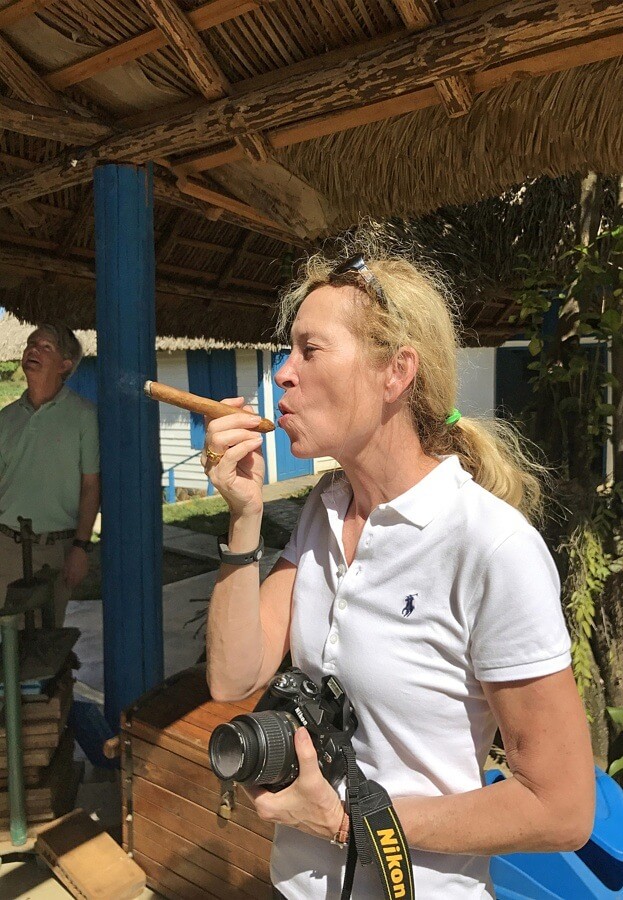

Since the farm can only sell its own non-labeled products, the Conde Villeneuva Cigar Lounge is the place to go in Havana to purchase the Cohibas, Montecristos and other coveted brands. With a large selection and knowledgeable sales staff, they will help you find whatever you are looking for and more.
Hemingway’s Cuba
Rum and literature converge at El Floridita, a small bar well known because of Ernest Hemingway’s fondness for afternoons spent there drinking daiquiris. The bar, located in Old Havana, is a favorite of tourists from all over, and is thus crammed with more people than seats on any given evening.
As you enter, there is a bronze statue of Papa Hemingway sitting at the left corner of the bar next to the wall (which you may be able to see through the haze of smoke). Over the energetic musicians, busy bartenders and loud, enthusiastic patrons singing along to what might be a song by Selena, your companions may hear you quote a few lines from Islands in the Stream. Those fortunate enough to snag a seat at the bar can imagine it as a quieter local’s joint in the ’40s and early ’50s.
The Floridita is only one of Hemingway’s old stomping grounds. The author loved Cuba and even called a hotel in Old Havana home with Martha Gellhorn, one of his many wives. He later moved to the countryside, to a house on a hill overlooking the city.
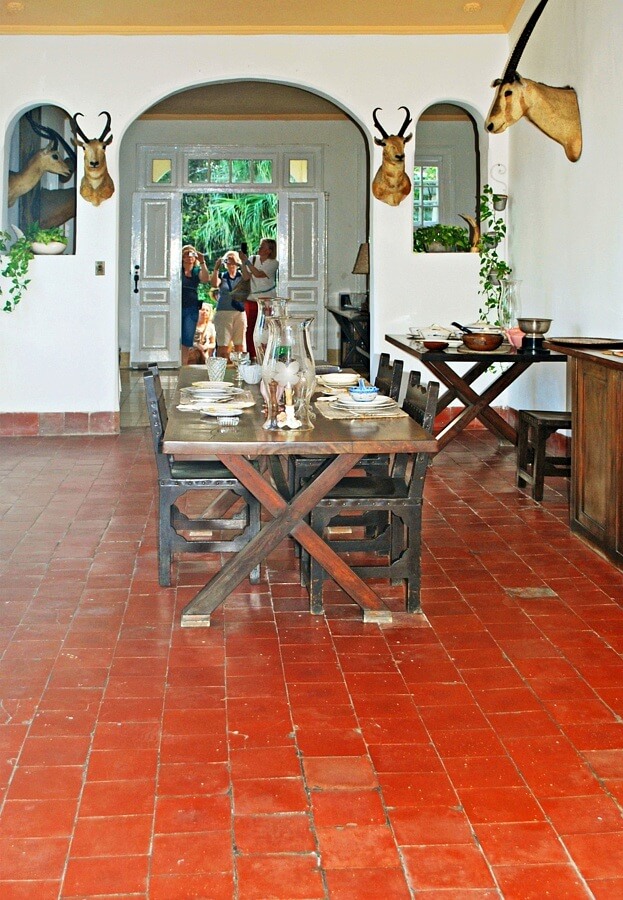

Proyecto Muraleando
While there is a museum of Cuban Art in Old Havana, art as a community revitalization project can be seen 5 kilometers south of Old Havana at the Proyecto Muraleando, a facility created out of an old, abandoned water tower, where found objects are used to create the art spaces and garden. Children from the impoverished neighborhood, hit hard by the economic crisis of the 1990s, come here for visual arts, dance and music. Do not be surprised to have young girls offer you some of their candies as they scamper around, both friendly to and curious about visitors.

The Tropicana
Music emanates from everywhere in Havana. You will hear everything from familiar rock tunes to the enticing and sensual rhythms of salsa and rhumba. Including a salsa dance lesson in your itinerary is an experience not to be missed. Even the most rhythmically challenged will enjoy learning a few basic steps, which the brave can try during an evening out on the town.
If stories of the floor shows from the ’40s and ’50s pique your interest, tickets to the Tropicana can be had. At about $100USD per person, it is not an inexpensive diversion, but the dancers, singers and musicians take you back to the days of men in dinner jackets and women in their furs and jewels. The price includes a bottle of rum and cola to sip on while being amazed and entertained by lithe young women showing skin and flashing large smiles.

Hotel Nacional de Cuba
Wherever you choose to lay your head at night, be it a cruise ship, one of the five-star hotels or a small themed hotel, put a visit to the Hotel Nacional de Cuba on your itinerary. Opened in 1930 and later acquired in part by the well-known New York mobster Meyer Lansky, this was a place to see and be seen. While no longer the splendid grande dame of the ’40s and ’50s, it retains a faded glamour that, when accompanied by a ride there in an old, well-kept American car, makes the view from the terrace bar a step back in time.
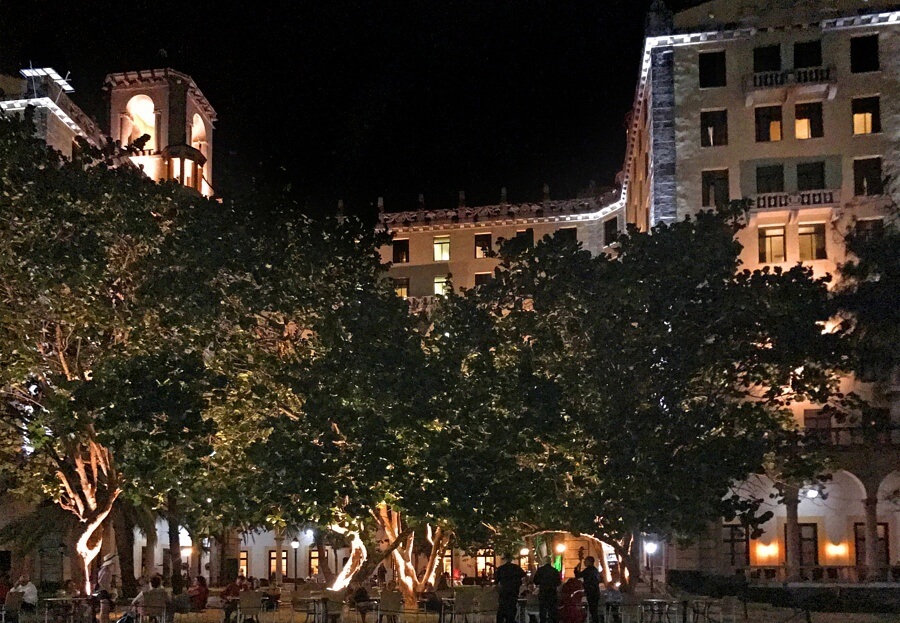
Travel Notes
If you have been dreaming about visiting Cuba, now is a good time to go. While the infrastructure is lacking (buildings crumbling next to those being restored, roads full of potholes and challenges getting around) the people are lovely, warm, friendly and proud of their heritage. For some U.S. visitors, it is disquieting to realize that there are restrictions on what they can do, and what they can say, and that the “triumph of the revolution” of 1959 lives on. But travel is about broadening one’s horizons, and a trip to Cuba will do that beautifully. In that spirit, here’s what to know before you go.
10 Things to Know Before Going to Cuba
1. Restrictions are in place.
U.S. citizens cannot travel as just a “tourist.” There are conditions and itinerary requirements that have been established by the Department of the Treasury. These requirements are not onerous and are worth the end result.
2. Bring cash, and exchange it in the United States.
Credit cards are still not generally accepted, so it is necessary to bring enough cash for any non-prepaid expenses and tips. Additionally, the U.S. dollar cannot be used in Cuba. There is a 10% surcharge, in addition to the normal change fee, when exchanging the dollar for CUCs (the Cuban tourist currency) in Cuba. The airport and hotels are the best locations to exchange money. Taking advantage of the dollar-euro exchange rate, we brought euros from the United States and saved the 10% surcharge.
3. Bathrooms aren’t free.
Bathroom facilities often require payment of .25CUC to 1CUC for toilet paper, flushing and hand-washing, so always carry coins with you.
4. You’ll be drinking water from a bottle.
Ice in the upscale hotels is generally fine to use, but bottled water is best for drinking. Most agencies/hotels provide at least one bottle per day.
5. Cuba is still a communist dictatorship.
Cuba is a communist dictatorship, and denigration of their leaders is NOT acceptable. It is best to avoid taking controversial reading materials or music with you.
6. Taxis don’t have meters.
When using a taxi, negotiate the fare BEFORE you accept the ride.
7. Internet and cellular data aren’t cheap.
In general, you will have to pay for internet at your hotel. For us, it was approximately $5CUC per 30 minutes. Your AT&T and Verizon cell phones should work in Cuba, however you will be subject to your carrier’s international per call rates. It is best to plan to be unplugged for the duration of your trip.
8. Tipping is expected.
The average Cuban lives on the equivalent of $30USD per month. Check with your tour agency to see what tipping is included in your package, but plan to tip your guide and driver additionally.
9. Reading fiction and nonfiction before your travels will heighten your experience .
In addition to Hemingway’s Old Man and the Sea and especially Islands in the Sea, I recommend Havana Nocturne: How the Mob Owned Cuba and Then Lost It to the Revolution by T.J. English, Bacardi and the Long Fight for Cuba: The Biography of a Cause by Tom Gjelten, as well as any guide books you can find.
10. Find a travel agent
We worked with Rosie Holliday of Holliday Adventures, and she put us with YA’ALLA tours out of Oregon. Road Scholars does group tours for those 55 and older, and there are now many cruise itineraries, such as National Geographic, which include Cuba. The most important consideration is to find someone knowledgeable about all the ins and outs of travel to Cuba to ensure you’re prepared to enjoy this unbeatable experience.
***********
Pack your bags! We have even more amazing travel destinations, pointers, itinerary and more in our travel archives!



















